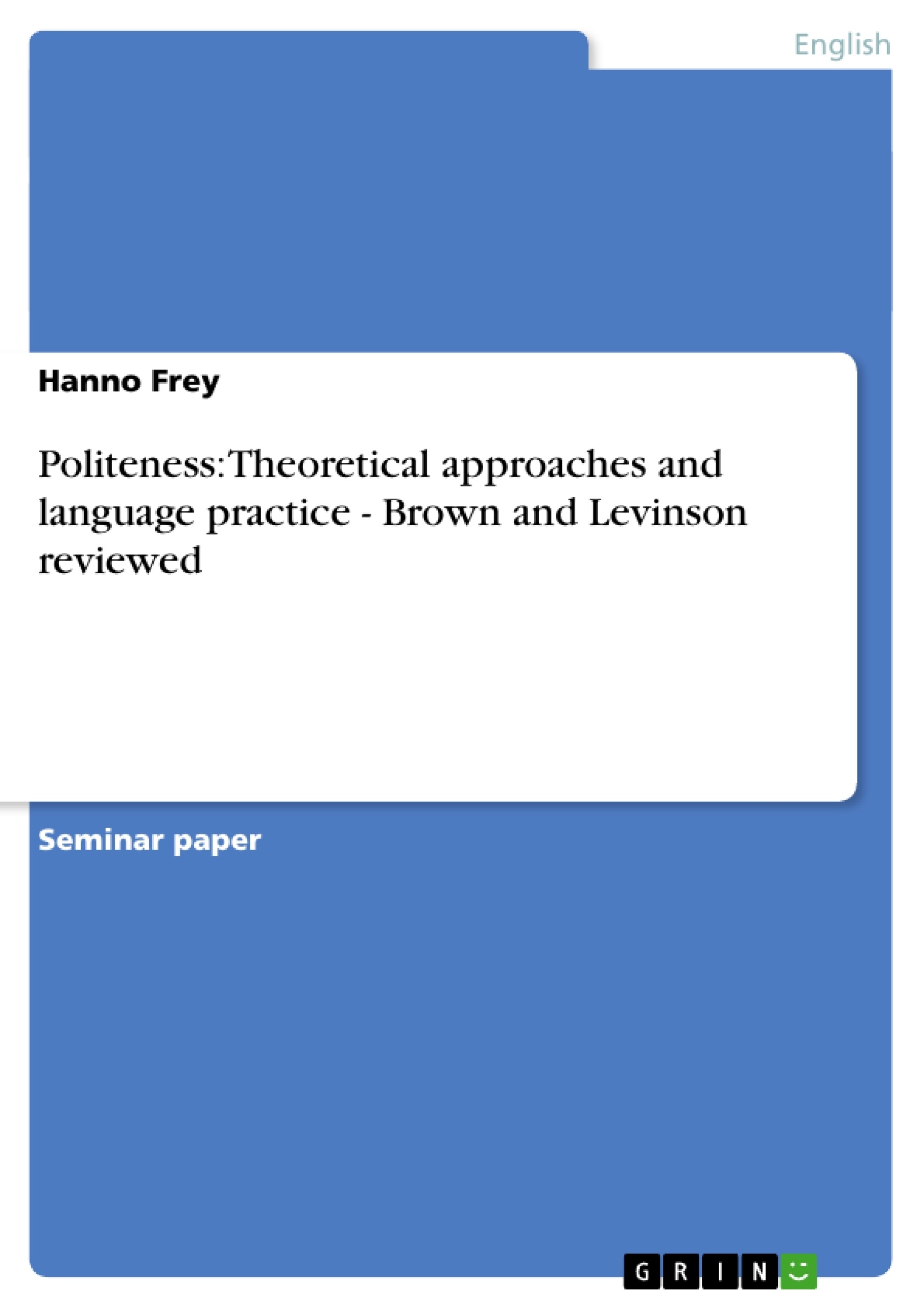Effective communication is a key process in everyday life. Not only do we need to communicate about business and public affairs but also about ourselves and the things which concern us personally. In each case, it is highly interesting to analyse how we try to convey the information we want to get across: Naturally enough, we make use of conventional language but we are also creative and constantly invent new words, phrases and formulations. This, according to Blank, is due to the fact that: "Linguistic (and even non-linguistic) communication can be seen as a process whereby people try to maximize their communicative success by minimalizing their linguistic effort" (1993, p. 6). Sometimes, however, we diverge from the maximally effective way of communication and, naturally-enough, the question arises, why we do so. The divergence, however, which seems to be highly irrational as far as efficiency is concerned will turn out to be highly rationally motivated - with politeness being the main reason for this process. In the following, I will (1) sketch out the maxims according to which effective communication takes place and (2) analyse the reasons why it is sometimes advisable to intentionally counteract to the requisite maxims. For this purpose, I will refer to different works of well known linguists, especially to the model of politeness suggested by Brown and Levinson ( 1987). It is the final aim of this paper to reanalyse the model put forward by these two linguists and, thereby, evaluate to what extent their model covers politeness phenomena.
Table of Contents
- INTRODUCTION
- GRICE AND THE PRINCIPLES OF CONVERSATION.
- COUNTEREXAMPLES
- CONVERSATIONAL AND CONVENTIONAL IMPLICATURES
- Conversational implicatures.....
- Conventional implicatures....
- ABOUT THE IMPORTANCE OF IMPLICATURES……………………..
- POLITENESS.
- FACE
- Face threatening Acts.........
- The five strategies connected to FTAs and their payoffs...
- Example: Application of the strategies..
- Criteria for the assessment of the seriousness of an FTA ..........\n.....
- SUMMARY AND REANALYSIS OF BROWN AND LEVINSON'S MODEL ......
- SUMMARY
- LIMITS OF BROWN & LEVINSON'S MODEL..
- The notion of face in the context of different societies.
- Politeness and grammatical structure.
- Speaker and Hearer........
- Conclusion
- SELECTED BIBLIOGRAPHY
Objectives and Key Themes
This paper examines the concept of politeness in communication, exploring its theoretical underpinnings and practical applications. It aims to analyze the model of politeness proposed by Brown and Levinson (1987), evaluating its effectiveness in covering various politeness phenomena. The paper draws upon the work of prominent linguists, particularly H.P. Grice, to explore the maxims of effective communication and analyze the reasons for intentional deviations from these maxims.
- Grice's cooperative principle and its maxims
- The concept of politeness and face
- Brown and Levinson's model of politeness
- Implicatures and their role in communication
- The limitations of Brown and Levinson's model
Chapter Summaries
The introduction sets the stage by discussing the importance of effective communication and highlighting the role of politeness in achieving communicative success. It introduces the paper's objectives and the theoretical framework employed.
Chapter 2 delves into Grice's cooperative principle and its maxims, which serve as the foundation for effective communication. The chapter then analyzes various counterexamples to these maxims, emphasizing the importance of implicatures in communication.
Chapter 3 focuses on the concept of politeness and its connection to face. It explores Brown and Levinson's model of politeness, detailing the five strategies used to manage face-threatening acts and the criteria for assessing the seriousness of such acts.
Chapter 4 summarizes Brown and Levinson's model of politeness and analyzes its limitations, addressing issues related to the notion of face in different societies, the role of grammatical structure in politeness, and the speaker-hearer relationship.
Keywords
The key concepts explored in this paper include politeness, communication, face, face-threatening acts, cooperative principle, maxims, implicatures, conversational implicatures, conventional implicatures, Brown and Levinson's model, and the limitations of Brown and Levinson's model.
- Quote paper
- Hanno Frey (Author), 1999, Politeness: Theoretical approaches and language practice - Brown and Levinson reviewed, Munich, GRIN Verlag, https://www.grin.com/document/12618




